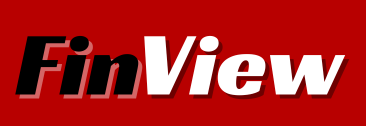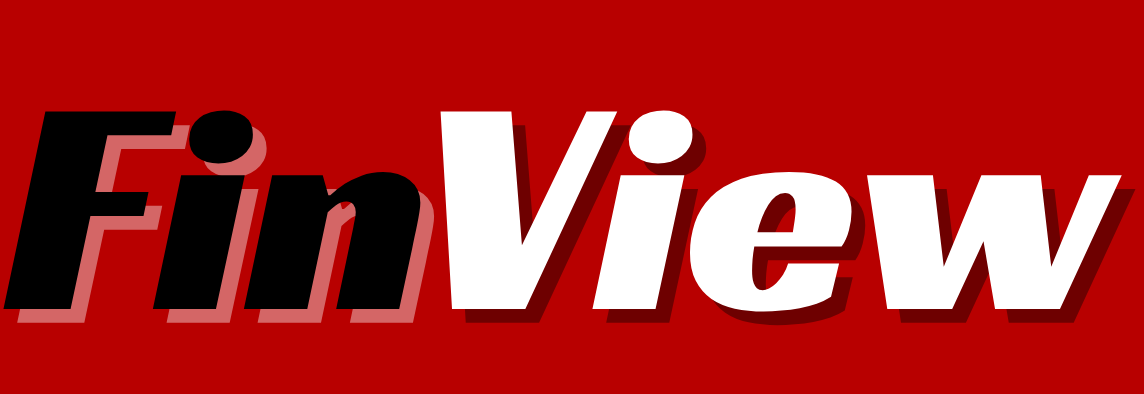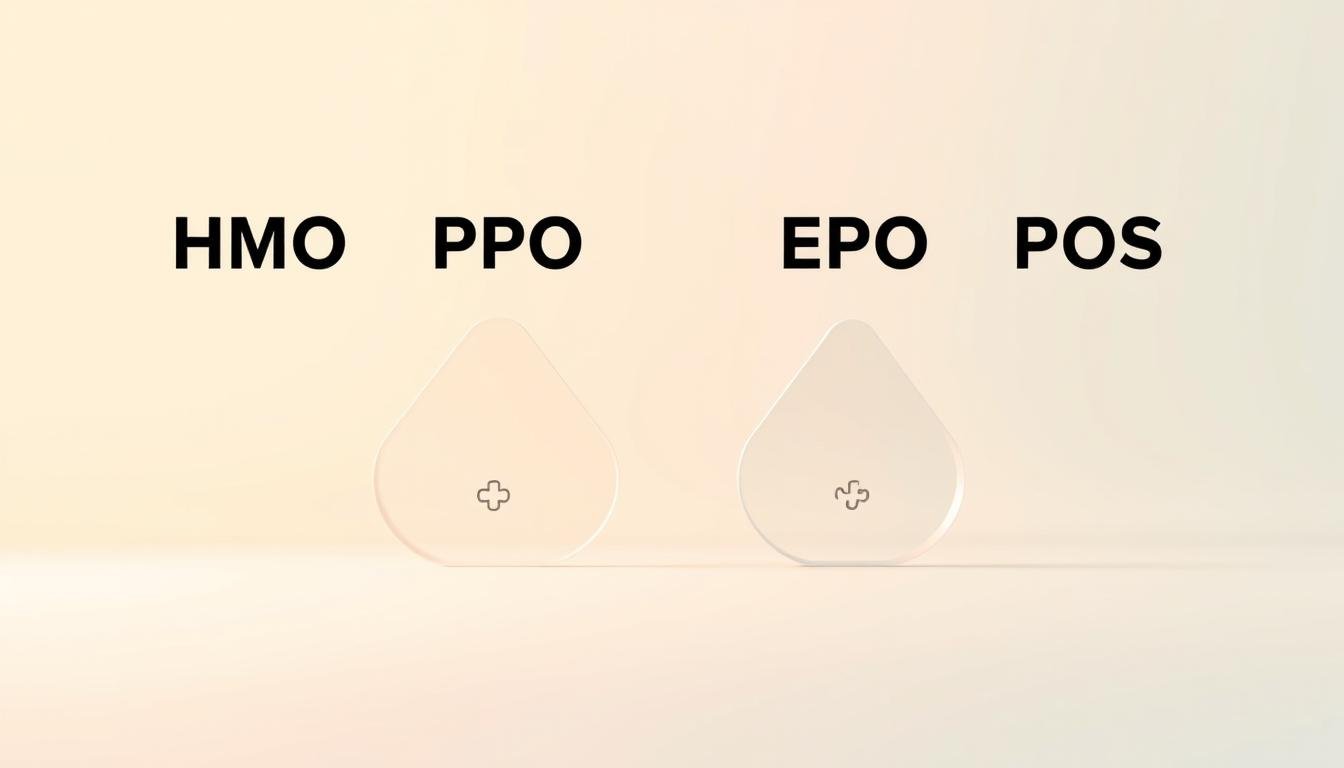It is striking that nearly 67% of Americans find health insurance plans perplexing, with a staggering 27 million adults remaining uninsured. The imperative to comprehend the diverse health insurance plans is evident, as it directly influences the selection of the most suitable coverage. This article aims to elucidate the distinctions between Health Maintenance Organizations (HMOs), Preferred Provider Organizations (PPOs), Exclusive Provider Organizations (EPOs), and Point of Service (POS) plans. Each category presents distinct advantages and disadvantages, affecting costs, the range of provider options, and accessibility. Our objective is to dissect the fundamental aspects and subtleties of these plans, empowering you to make a well-informed choice.
Key Takeaways
- Health insurance plans vary significantly between HMOs, PPOs, EPOs, and POS options.
- Consider costs such as premiums, deductibles, and copays when comparing health insurance options.
- HMO plans often have lower out-of-pocket costs but require primary care provider referrals.
- PPO plans offer more flexibility in provider choice but come with higher premiums.
- EPO plans restrict provider networks but eliminate the need for referrals.
- POS plans combine features of HMO and PPO, providing reduced costs for in-network care and referrals.
Understanding Health Insurance Basics
Health insurance is an indispensable element of financial planning, serving as a safeguard against the exorbitant costs of medical care. By exploring the intricacies of what is health insurance, we reveal a mechanism where an insurer undertakes the financial responsibility for medical expenses in exchange for premiums. This arrangement mitigates the financial impact of medical bills, ensuring that essential healthcare remains accessible without precipitating financial hardship.
To comprehend the health insurance basics, it is imperative to grasp the types of health insurance coverage available. The diversity in coverage types is contingent upon several critical factors:
- Network of providers
- Flexibility in care-seeking
- Direct cost-sharing frameworks
These categories encompass:
- Health Maintenance Organization (HMO): Mandates utilization of a network of providers and necessitates referrals for specialist care.
- Preferred Provider Organization (PPO): Offers enhanced flexibility in provider selection and eliminates the need for specialist referrals.
- Exclusive Provider Organization (EPO): Provides coverage only when utilizing providers within the plan’s network, except in emergency situations.
- Point of Service (POS): A blend of HMO and PPO features; members may require referrals for specialist consultations.
The myriad types of health insurance coverage are designed to cater to diverse needs, ranging from the all-encompassing care offered by HMOs to the flexibility of PPOs. Recognizing these differences empowers individuals to select plans that align with their health and financial requirements.
Comprehending these health insurance basics is vital for effective management of one’s health and finances. Understanding what is health insurance and examining the types of health insurance coverage available facilitates the selection of plans that best meet individual needs.
Health Maintenance Organization (HMO) Plans
HMO plans represent a paradigm of health insurance, distinguished by their provision of all-encompassing coverage within a predetermined network of healthcare providers. This model is advantageous for those who prioritize fiscal prudence over the flexibility to seek care from any provider. By restricting healthcare services to a network, HMO plans achieve lower premium costs and emphasize preventive care initiatives.
Within an HMO framework, members are obligated to select a primary care provider (PCP), who serves as the primary conduit for all healthcare requisites. This structured paradigm ensures that all medical interventions are meticulously coordinated, necessitating referrals from the PCP to access specialist care. Such a system enhances the efficacy of healthcare delivery.
Despite their generally lower out-of-pocket expenses, it is imperative to consider the pros and cons of HMO. They are most suitable for individuals who value structured, ongoing healthcare relationships and centralized management. Notwithstanding, they may not be ideal for those who frequently require specialist consultations without the need for referrals.
| Aspect | HMO Plans |
|---|---|
| Flexibility in Choosing Providers | Limited to Network Providers |
| Primary Care Referrals Required | Yes |
| Out-of-Pocket Costs | Lower |
| Focus on Preventive Care | High |
Preferred Provider Organization (PPO) Plans
Preferred Provider Organization (PPO) plans offer a unique blend of flexibility and autonomy in healthcare choices. Unlike Health Maintenance Organization (HMO) plans, *PPO plans* eliminate the need for a primary care referral to access specialists. This provision empowers subscribers to directly schedule appointments with specialists, catering to their specific healthcare needs.
The benefits of PPO plans transcend mere flexibility. They provide access to a vast network of healthcare providers, facilitating the selection of a practitioner that aligns with individual preferences. Notably, PPO plans also offer coverage for out-of-network care, albeit with increased out-of-pocket expenses. This ensures that subscribers remain covered even when seeking medical attention outside their network.
Despite higher premiums compared to other plans, many subscribers find the extensive network and enhanced specialist access to be invaluable. For individuals with specific health requirements or those who frequently travel, the ability to access care without geographical constraints is a substantial benefit. Below is a summary highlighting the core differences between PPO and HMO plans:
| Feature | PPO Plans | HMO Plans |
|---|---|---|
| Flexibility to see Specialists | Yes, without referral | No, referral needed |
| Network Size | Extensive, includes out-of-network | Limited, network-only |
| Premium Costs | Higher | Lower |
| Out-of-Network Coverage | Yes, at higher cost | No |
Exclusive Provider Organization (EPO) Plans

EPO plans occupy a niche between the rigid structure of Health Maintenance Organizations (HMOs) and the expansive flexibility of Preferred Provider Organizations (PPOs). Unlike HMOs, EPO plans eliminate the need for referrals to specialists, granting users greater autonomy in healthcare provider selection. This hybrid model amalgamates cost-effectiveness with provider flexibility, appealing to those seeking to manage healthcare expenses while maintaining control over their healthcare choices.
The advantages of EPO plans are evident in their streamlined in-network care provision, obviating the need for referrals. Notably, EPOs do not cover out-of-network services, except in emergency scenarios. This stipulation necessitates adherence to a specified network to circumvent unforeseen healthcare expenditures.
Here are some key features of EPO plans:
- No referrals needed for specialists within the network.
- Coverage is generally limited to in-network providers except in emergencies.
- Lower premiums compared to PPOs, but typically higher than HMOs.
- Flexibility to choose specialists without a primary care physician’s approval.
The table below outlines the main differences and advantages of EPO plans compared to other plan types:
| Plan Type | Primary Care Physician Requirement | Referral for Specialist | Out-of-Network Coverage | Cost |
|---|---|---|---|---|
| EPO | No | No | Emergency only | Moderate |
| HMO | Yes | Yes | Emergency only | Low |
| PPO | No | No | Yes | High |
| POS | Yes | Yes | Yes | Moderate |
Opting for an EPO plan is advantageous for those desiring a balance between cost-efficiency and provider flexibility within a network. EPO plans, with their unique blend of HMO and PPO characteristics, offer a streamlined healthcare management solution. They eliminate the need for constant referrals while preventing out-of-network expenses, making them a viable option for those seeking cost-effective healthcare without compromising on provider choice.
Point of Service (POS) Plans
Point of Service (POS) plans represent a hybrid model, amalgamating attributes from both HMO and PPO health insurance schemes. Policyholders are mandated to designate a primary care physician (PCP), a trait reminiscent of HMOs. Yet, POS plans diverge from traditional HMOs by permitting policyholders to seek care outside the network, akin to PPOs. This provision, while augmenting costs for out-of-network services, offers a personalized healthcare approach.
The inherent benefits of POS plans include the coordinated care model typical of HMOs, which often results in reduced overall healthcare expenditures. The capacity to access out-of-network services, when deemed necessary, serves as a safeguard for specialized care not available within the network. This dual advantage positions POS plans as a compelling choice for those desiring a cost-effective yet flexible healthcare solution.
POS plans generally exhibit lower premium costs compared to PPO plans while providing more autonomy and choice than HMO plans. The availability of out-of-network providers with POS plans caters to the needs of individuals seeking a more extensive range of healthcare options without the financial burden of PPOs. The equilibrium between managed care and the freedom to choose stands as a hallmark benefit of POS plans.
By grasping the distinct characteristics and advantages of point of service plans, individuals and families can make more informed decisions regarding their health insurance. This ensures they attain the optimal balance between cost-effectiveness and flexible care options.
Comparing HMO, PPO, EPO, and POS Plans
In the realm of health insurance, several variables dictate the selection process: premium costs, network accessibility, and adaptability. Grasping these nuances is imperative for a well-informed decision-making process.
Health Maintenance Organizations (HMOs) are characterized by their affordability, yet they impose limitations on healthcare provider access and necessitate specialist referrals. In contrast, Preferred Provider Organizations (PPOs) offer enhanced flexibility and broader network access, albeit at a premium cost.
Exclusive Provider Organizations (EPOs) share similarities with PPOs, providing flexibility without the need for specialist referrals, albeit at a higher cost. Point of Service (POS) plans, on the other hand, strike a balance between cost and access, albeit with the caveat of specialist referrals akin to HMOs.
| Plan Type | Monthly Premium | Provider Access | Flexibility |
|---|---|---|---|
| HMO | Lowest | Restricted, Must Use Network Providers | Low, Referrals Required |
| PPO | Higher | Wide, In-Network and Out-of-Network | High, No Referrals Necessary |
| EPO | Higher | Wide, In-Network Only | High, No Referrals Necessary |
| POS | Moderate | Wide, Mix of Network Providers | Moderate, Referrals Required |
Your selection should be guided by your priorities regarding premium costs, network accessibility, and plan adaptability. A thorough evaluation of these factors will facilitate the identification of the most suitable health insurance plan for your circumstances.
Understanding Premiums, Deductibles, and Copays
Delving into the intricacies of health insurance premiums, deductibles, and copays is imperative for comprehending the financial obligations associated with healthcare. A thorough analysis of these components is essential for effective financial planning and budgeting for medical expenses.
Health insurance premiums are the monthly stipulations required to sustain a health insurance policy. These premiums serve as a subscription fee, ensuring continuous coverage and access to healthcare services.
Deductibles embody the upfront financial commitments policyholders must fulfill before their insurance coverage commences. The relationship between deductibles and premiums is inversely proportional; higher deductibles correlate with lower premiums, and vice versa.
Copays, on the other hand, are predetermined payments necessitated at the point of service, encompassing doctor visits or prescription medications. These copays are obligatory, irrespective of whether the deductible has been fulfilled.
To further illustrate:
| Item | Description |
|---|---|
| Health Insurance Premiums | Monthly payments to maintain health insurance coverage. |
| Deductibles | Out-of-pocket costs that must be met before the insurance covers expenses. |
| Copays | Fixed amounts paid for healthcare services at the time of the visit. |
By comprehensively *understanding health insurance costs*, including premiums, deductibles, and copays, individuals can make informed decisions that align with their financial and healthcare needs.
Navigating the Enrollment Process

The process of enrolling in a health plan, though complex, can be navigated with proper preparation. Typically, the enrollment period for health insurance occurs annually, serving as the optimal time to secure coverage. Special circumstances, such as marital status changes, childbirth, or loss of previous coverage, may qualify for additional enrollment windows.
To facilitate a seamless enrollment, it is imperative to collect all required documents in advance. Essential documents include proof of income, personal identification, and verification of residency. Having these documents prepared in advance can expedite the enrollment process, ensuring a smoother transition into health insurance coverage. Proactive preparation is key to meeting all documentation requirements, streamlining the enrollment process.
For those overwhelmed by the process, numerous resources and support options are available. Employers often provide guidance during enrollment, and healthcare navigators are on hand to answer questions and offer assistance. Utilizing these resources can greatly enhance the success of enrolling in health insurance.
- Step 1: Review different health insurance plans to find the best match for your needs.
- Step 2: Gather necessary documents such as ID, proof of income, and residency proof.
- Step 3: Complete the application during the open enrollment period or qualify for a special enrollment period.
- Step 4: Submit your application and await confirmation of enrollment.
By comprehending the enrollment process and acting promptly, one can make informed decisions regarding health insurance. This proactive approach ensures the acquisition of appropriate coverage at critical times.
Using Health Insurance Once Enrolled
Maximizing the benefits of your health insurance necessitates a thorough comprehension of its utilization. The initial step involves identifying in-network providers, which are essential for minimizing out-of-pocket expenses. Engage with your insurance provider’s online directories or customer service to locate healthcare professionals within your network.
Grasping the intricacies of the health insurance claims process is equally vital. When you receive medical care, your provider will typically submit a claim on your behalf. Yet, it is advantageous to possess the capability to navigate this process independently, should the need arise. Retain all receipts and documentation related to your healthcare services to expedite the claims process.
Emergencies can occur unexpectedly, and being well-versed in the appropriate protocol can alleviate stress and financial burden. For urgent care, immediately contact your insurance support for guidance on the most suitable facilities and services covered by your plan. This proactive measure ensures that you are not confronted with unforeseen expenses following a medical emergency.
| Action | Details |
|---|---|
| Finding In-Network Providers | Use your insurer’s online directory or customer service |
| Filing Claims | Keep all medical receipts and documentation |
| Handling Emergencies | Contact insurance support for directed services |
By adeptly using health insurance and comprehending the claim procedures, you are empowered to navigate any medical scenario effectively. This approach not only minimizes costs but also maximizes the benefits of your insurance plan.
Common Questions About Health Insurance Plans
In the realm of choosing a health insurance plan, numerous inquiries arise, imperative for securing adequate coverage. These frequently posed queries are instrumental in making an informed decision.
What factors should I consider when selecting a health insurance plan?
When choosing a health insurance plan, it is critical to evaluate your current and future healthcare requirements, financial standing, and the distinctions between plan types such as HMOs, PPOs, and EPOs. The network of providers, prescription drug coverage, and out-of-pocket expenses like premiums, deductibles, and copays must also be scrutinized.
How do I switch from one health plan to another?
Changing health insurance plans often necessitates waiting for the open enrollment period, except in cases of qualifying life events such as marriage, childbirth, or job loss. During this period, it is advisable to meticulously compare the available plans, focusing on coverage, provider network, and overall costs.
What should I do if my health plan is discontinued?
In the event of a plan discontinuation, it is imperative to choose an alternative health insurance plan to maintain coverage. This may involve exploring options through your employer, purchasing a plan through the health insurance marketplace, or considering COBRA continuation coverage.
| Question | Answer |
|---|---|
| What is the best time for changing health insurance plans? | The optimal time is during the open enrollment period or when qualifying for a special enrollment period due to specific life events. |
| Where can I check health plan availability? | Health plan availability can typically be verified through your employer’s HR department, the health insurance marketplace, or directly from insurance providers. |
| Do I need to inform my current health plan about switching plans? | It is imperative to notify your current insurer, even outside of open enrollment, to avoid overlapping coverage or penalties. |
Resources for Learning More About Health Insurance
The intricacies of health insurance necessitate a plethora of health insurance resources to facilitate comprehension. Government health portals, such as HealthCare.gov, serve as repositories of information regarding various plans, coverage options, and enrollment periods. These platforms are equipped with practical tools for comparison, enabling users to discern the subtleties of each plan.
For those in search of support specific to their locale, state health insurance information emerges as a critical asset. Each state’s health insurance marketplace offers plans that are in compliance with regional regulations and healthcare providers. Accessing resources specific to your state ensures receipt of pertinent and accurate information, facilitating informed decision-making.
Seeking individualized assistance? Professional advisors, including financial advisors and insurance brokers, possess specialized knowledge to aid in the selection of the most suitable health insurance plan. They elucidate complex terms such as premiums, deductibles, and copays, simplifying the selection process.
A table summarizing key resources for delving deeper into health insurance follows:
| Resource | Description |
|---|---|
| Government Health Portals | Provide a wealth of information and comparison tools for a broad spectrum of health insurance plans. |
| State Health Insurance Information | Offers localized data and support for state-specific health insurance plans. |
| Professional Advisors | Deliver personalized guidance for selecting and managing health insurance. |
Health Insurance for Special Populations
Specialized health insurance needs exist for families, seniors, and low-income individuals. Family health insurance plans provide extensive coverage, including pediatric services, maternity benefits, and preventive care tailored for children and dependents. These plans aim to safeguard the health and well-being of the entire family, mitigating financial strain.
Seniors benefit from specialized health insurance options, such as Medicare Advantage plans, which cater to common ailments among the elderly. These plans often include coverage for prescription drugs, chronic disease management, and wellness programs, addressing the unique health challenges seniors face. They also frequently offer benefits for vision, hearing, and dental services, essential for maintaining health in later years.
Low-income health coverage is vital for ensuring access to medical care for individuals and families with limited financial means. Programs like Medicaid offer affordable health insurance solutions, focusing on preventive care, routine check-ups, and emergency services. These plans are designed to reduce out-of-pocket expenses, providing broad coverage and helping to bridge the gap for those who might forego necessary medical treatments due to cost concerns.






